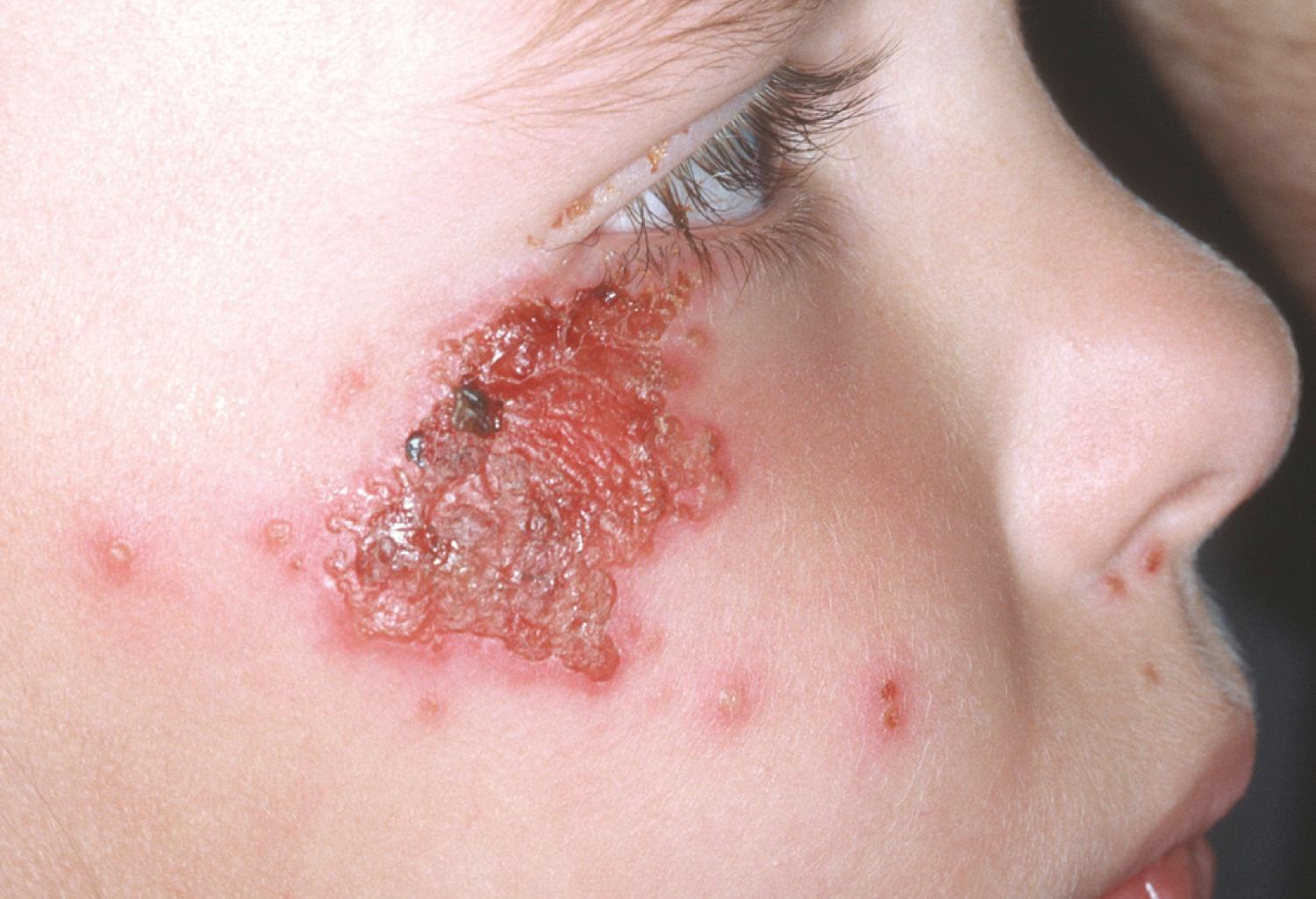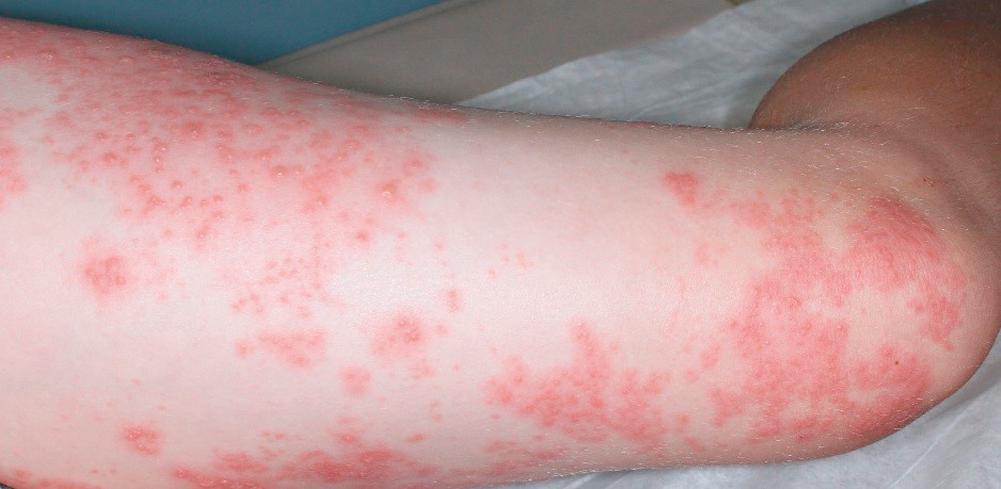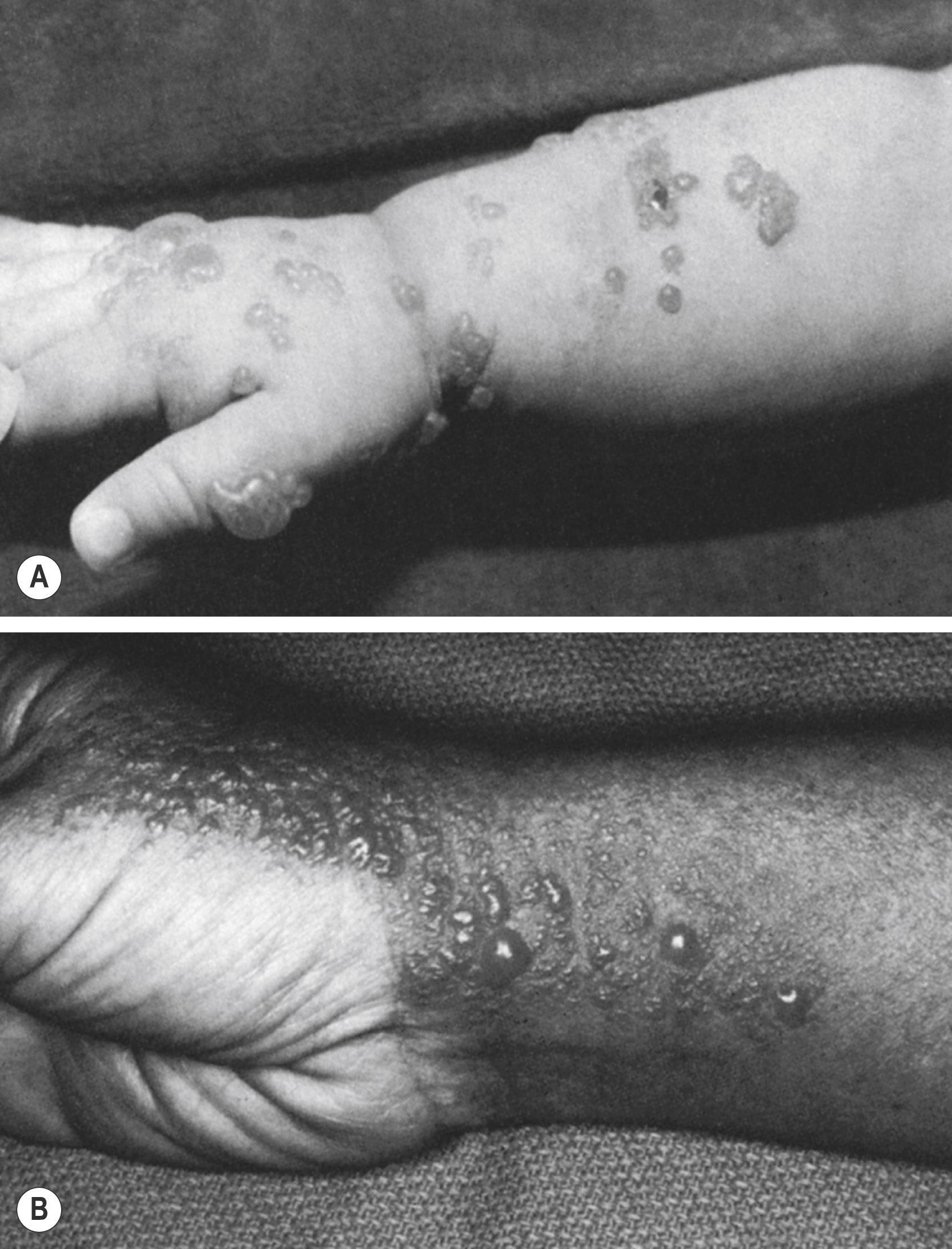Physical Address
304 North Cardinal St.
Dorchester Center, MA 02124
Vesicles and bullae (i.e., blisters) result from a disturbance of epidermal or basement membrane connections, creating spaces that allow fluid collection. Blisters can be caused directly by bacterial, viral, and fungal infections or a reactive phenomenon to an infection. Diagnosis of vesiculobullous eruptions must be made promptly because, although some conditions are benign, others are rapidly progressive and rarely life threatening.
The skin consists of epidermis, composed primarily of keratinocytes, and an underlying dermis of connective tissue ( Fig. 69.1 ). The basement membrane zone anchors the epidermis to the dermis. Cohesion between layers of the skin is weakest in the epidermis at the stratum corneum–spinous cell transition zone and within the least electron-dense region of the basement membrane zone called the lamina lucida . A plane of cleavage (i.e., blister) is most likely to develop at these levels (see Fig. 69.1 ). The Nikolsky sign results when application of a lateral, sliding force to nonblistered skin (usually at a site of erythema or adjacent to a bullous lesion) produces a plane of cleavage. This maneuver can be useful in the clinical recognition of a blistering disorder but cannot be used to judge the depth of the blister in the skin.
Vesicles and bullae are circumscribed, elevated lesions filled with clear fluid. Depending on the mechanisms responsible for their formation, blisters can contain a combination of serous or lymphatic fluid, serum proteins, antigen-antibody complexes, and soluble inflammatory mediators. Cellular elements can include inflammatory cells, erythrocytes, detached epidermal cells, and infectious agents. Vesicles measure less than 1 cm in diameter, and bullae are 1 cm or larger. Vesicles and bullae associated with infection can be solitary, such as the lesion of streptococcal blistering dactylitis; localized, as in staphylococcal bullous impetigo; grouped or clustered, as in herpes simplex virus (HSV) infection; arranged in a dermatome, as in herpes zoster; or generalized, as in chickenpox.
A vesicle or bulla that is located in the epidermis tends to be flaccid and to rupture easily. When located subepidermally, bullae typically are tense , have greater structural integrity, and rupture less easily. As a vesicle or bulla matures, an influx of leukocytes and accumulation of cellular debris can occur, leading to development of a pustule. Depending on the cause of the inflammatory response, a pustule can be infected or sterile.
Rupture and detachment of the roof of a subcorneal or intraepidermal blister leads to a moist, slightly depressed erosion. Erosions do not extend below the epidermal-dermal junction and heal without scarring. Postinflammatory pigmentary changes, however, can exist for weeks to months. When an unroofed blister extends into the dermis or subcutaneous tissue, it forms an ulcer. Scarring or postinflammatory pigmentary changes can follow healing of a wound that involves the dermis. Erosion or ulceration is accelerated in areas of friction or maceration, such as in the axillae or perineum, and on the mucous membranes of the oropharynx and vagina. Crusts or scabs are the dried remnants of serum, blood, and cellular debris. They form quickly over denuded areas.
It is not unusual for several types of lesions to occur at the same time in an individual. For example, the eruptions caused by varicella can comprise a variety of lesions in various stages of evolution, including macules, papules, vesicles, and pustules, mixed with erosions, ulcers, crusts, and self-induced linear excoriations. Bullae can form if staphylococcal superinfection occurs (see Fig. 118.3 ).
Although the list of infectious agents capable of causing vesiculobullous rashes is lengthy, the most common agents are enteroviruses, varicella-zoster virus (VZV), HSV, Staphylococcus aureus, and Streptococcus pyogenes . The list of noninfectious conditions that closely mimic the eruption caused by these organisms also is lengthy, often leading to a difficult or delayed diagnosis.
The cause of a vesiculobullous infection frequently can be established by consideration of the epidemiologic context. Differentiating the morphology, distribution, and evolution of the eruption is key to diagnosis. The season, patient age, history of recent exposure to infectious agents or medications, previous disease, and concurrent symptoms are factors to be considered. Categorization based on depth (i.e., tense or flaccid) and the predominant size (i.e., vesicles or bullae) also can aid the diagnosis ( Table 69.1 ).
| Infection or Reaction Pattern | Type of Blister | Size | Usual Locations | Other Clinical Signs and Symptoms |
|---|---|---|---|---|
| Herpes simplex virus | Tense | Vesicles | Most often mucosal or perimucosal | Clustered and painful |
| Zoster (varicella-zoster virus reactivation) | Tense | Vesicles | Any dermatome | Clustered in a dermatome or disseminated in immunocompromised |
| Hand-foot-and-mouth disease (enterovirus infection) | Tense | Vesicles | Palms, soles, oral mucosa, and buttocks | Vesicles tend to be oval and on the hands and feet, following dermatoglyphics |
| Bullous impetigo | Flaccid | Vesicles or bullae | Perioral or perineal | Honey-colored crusting |
| Staphylococcal scalded skin syndrome | Flaccid, superficial epidermis only | Large bullae | First manifests in intertriginous areas, then can be widespread | Age <5 yr |
| Dactylitis | Tense | Bullae | Digits | Painful and red |
| Vibrio vulnificus infection | Tense | Bullae | Feet | Purple edematous (typically on extremity) with tense bullae |
| Necrotizing fasciitis | Tense | Bullae | Any site | Hyperesthetic or anesthetic purpuric skin |
| Bullous tinea | Tense | Vesicles or bullae | Feet | Annular or interdigital scaling |
| Stevens–Johnson syndrome | Flaccid, full thickness of epidermis | Vesicles or bullae | Face and orofacial, any site | Exuberant mucosal involvement (lips, oral mucosa, eyes, perineum) |
Cutaneous HSV infection typically manifests as 1–4 mm vesicles that appear in clusters corresponding to the distribution of the infected nerve or primary inoculation site. Mucosa and periorificial areas tend to have microabrasions and are more susceptible to infection. Primary HSV infections can be exuberant and lead to extensive vesiculation, especially in the mouth (i.e., primary herpetic gingivostomatitis). Recurrences of HSV usually are localized, and unless the patient is immunocompromised, they may lead only to edematous, crusted papules ( Fig. 69.2 ). HSV infecting digits (i.e., whitlow) usually cause a tense, larger bulla made of many individual vesicles that are held together by the thick acral skin. This often produces a honeycomb pattern of loculated vesicles. Recurrent, clustered vesicles, crusts, or pustules in a fixed spot, even if not mucosal, should alert the clinician to the possibility of HSV infection. Longstanding, crusted ulcerations are a common presentation in immunocompromised patients when the HSV infection cannot be cleared adequately.

Zoster is cutaneous reactivation of the VZV virus that corresponds to the sensory nerve in which VZV had been dormant. The initial manifestation may be painful, red papules clustered in a plaque that then vesiculate over a few days and finally crust and leave erosions. The key to diagnosis is the dermatomal distribution ( Fig. 69.3 ) and sometimes zoster can be confused with contact dermatitis ( Fig. 69.4 ). Children may have one to three adjacent dermatomes involved in uncomplicated zoster, which can occur after vaccination but is more common in children who had chickenpox and especially when chickenpox occurred at less than 1 year of age. Most children with zoster are otherwise healthy. Dissemination from an initial dermatomal cluster, involvement of multiple noncontiguous dermatomes, or a concerning review of systems should alert the clinician to the possibility of underlying immunocompromising conditions.


Primary varicella (i.e., chickenpox) and disseminated VZV in immunocompromised patients manifest as widely distributed, crusted papules and vesicles on a red base (“dew drops on a rose petal”) (see Fig. 205.2 ).
Hand-foot-and-mouth disease (HFMD) is caused by enteroviruses, including coxsackievirus A16, enterovirus 71, and enterovirus A6. HFMD manifests with vesicles anywhere in the mouth (including the tongue) and on the palms, soles, and buttocks. The oral mucosa, which has thin epithelium without stratum corneum, allows vesicles to rupture easily, and it is more common to see only erosions. Conversely, the palms and soles have a thick epidermis, and the vesicles may appear as red macules; it can be difficult to detect the fluid inside. Vesicles on the palms and soles tend to be oval and follow the dermatoglyphics (i.e., fingerprint markings).
Enterovirus A6 has become more prevalent in the United States. Enterovirus A6 infection often manifests with more exuberant HFMD, with larger and more widespread vesicles and bullae that also can occur on acral surfaces such as on the dorsum of feet, hands, and knees. Enterovirus A6 occurring in conjunction with atopic dermatitis can lead to eczema coxsackium.
SARS CoV-2, responsible for the coronavirus infectious disease pandemic beginning in 2019 (COVID-19), occasionally is associated with a vesiculopustular eruption that usually is disseminated but can be localized. Lesions usually arise after other symptoms and last 10 days. There is no specific therapy for the eruption.
Become a Clinical Tree membership for Full access and enjoy Unlimited articles
If you are a member. Log in here